
|   |

|   |
 e-mail: leelakaverivenkat@gmail.com Enterprise and talent keep Sutra afloat Photos courtesy: Sutra Foundation July 17, 2018 Odissi on High, the latest of Ramli Ibrahim's concepts, presented by Malaysia's Sutra Foundation at Kuala Lumpur's Experimental Theatre, Universiti Malaya, had audiences exclaiming over the verve and vivacity and excellence of the presentation. But one was more taken up with the manner in which Odissi as an art form has acquired such a strong permanent presence in a region outside of Odisha or even India. Even more mind boggling was the fact of the same ticketed programme presented over four evenings consecutively, attracting good audiences every evening. Try as one would, the comparison with India just could not be wished away, and I was unable to erase the image of our spoilt public wanting invitations, with even friends and so called well wishers having to be cajoled into attending dance events. How does Ramli Ibrahim, settled in an area which cannot provide him with the allied disciplines needed for Odissi like mardal percussion, Odissi music, Odiya poetry for thematic material, present a block buster festival every year? From where does he get the resources? 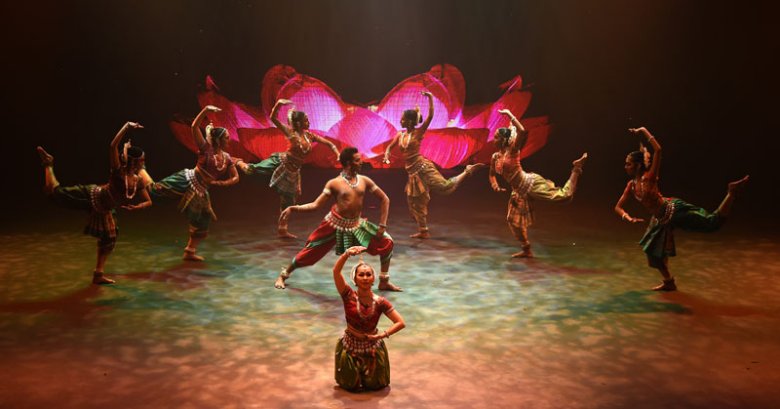 Any dancer/choreographer who is a regular organizer of large scale events needs an assured supporting base. Neither the government of Malaysia nor the corporate sector having helped, it is entirely public support that has kept Sutra Foundation going. Ramli, a bold critic of the government, in his opening remarks hoped that better governance under the new dispensation after the fourteenth election, would bring arts and culture within the co-agenda of the education of the public. "Art is what nurtures a society, make humans human...........We don't need a billion, a rhyming million will do nicely though to free us from having to scramble and scrape." So, it is clear that the Malaysian artist faces the same financial insecurities as his Indian counterpart. But what Ramli's organization is thriving on is the public goodwill built over years of unstinting effort. His constant awareness of the multi-dimensional and non-linear perspectives of art, along with his ideas of exploring the liberation of the human spirit through dance which is within and beyond the 'simplistic label of the traditional,' have made him seek cooperation from countries outside of Malaysia. With all his ideas about extending the contours of Odissi by making its appeal universal, in a borderless continuum where modernity is inspired by traditional techniques and sensibilities, his productions like Ganjam, Amorous Delight and Odissi on High designed for international audiences, have proved that art expression while existing in the ever vital present can contain within it the eternal verities of the past as also aspirations for the future. Fully mindful of the need to maintain strong links with Odisha, Ramli maintains a close cooperation with musicians, litterateurs, dance gurus of the Debaprasad school he represents, and research scholars, all of who have played major roles in his choreographed productions for Sutra Foundation. His lifelong ties with great thinkers like late Dinanath Pathy, a true renaissance man who combined roles of art scholar and historian, painter, writer, poet, produced long term dividends, leading in this case to the production of Ganjam, and even the next production based on Amarushatakam. In Odissi on High, his collaboration with another teacher /choreographer Bichitrananda Swain has included male dancers of the latter's institution Rudrakshya Foundation at Bhubaneswar, as part of the entire production, along with dancers from Sutra. That concept and artistic direction are by both Ramli and Bichitrananda, shows the willingness to accommodate and to influence and be influenced, in both artistes. This type of open minded coming together has opened up new vistas in choreography- notwithstanding the fact that Bichitrananda Swain's training represents a different school of Odissi under several gurus starting with Gangadhar Pradhan before moving on to Kelucharan Mohapatra, Sanjukta Panigrahi and Ramani Ranjan Jena. Having mastered a main style of Odissi which has turned out the maximum number of reputed female dancers, Bichitrananda's creativity has surprisingly looked at Odissi from the perspective of the male dancer who he felt had been made an also ran. His accent is largely on nritta designed for the male body. While his approach has elicited its share of responses both flattering and otherwise, his five male disciples Santosh, Sanjeev Kumar, Sameer, Jagyandatta and Bichitra stole the thunder in Odissi on High with their boundless body control and technique, mastery over rhythm and the controlled abandon of their dance - their Tal Taranga making the house erupt in applause. They created movement poetry and in the other Pallavi numbers also, the ease with which they combined with the largely female group of Sutra performers created magic. Watching the space adjustments while performing with a Geetika Sen or Tan Mei Mei of Sutra, or dancing along with a Harenthiran or Vickneswaran, one got the feeling of the two groups being very comfortable with each other, and of having always performed together. Ramli admitted that this type of coming together of his multi ethnic student group, and the home grown dancers nurtured in the all Oriya soil (though they have all performed in different countries) created a synergy which was refreshing- heightening the verve and imparting a sheer immediacy to the dance. 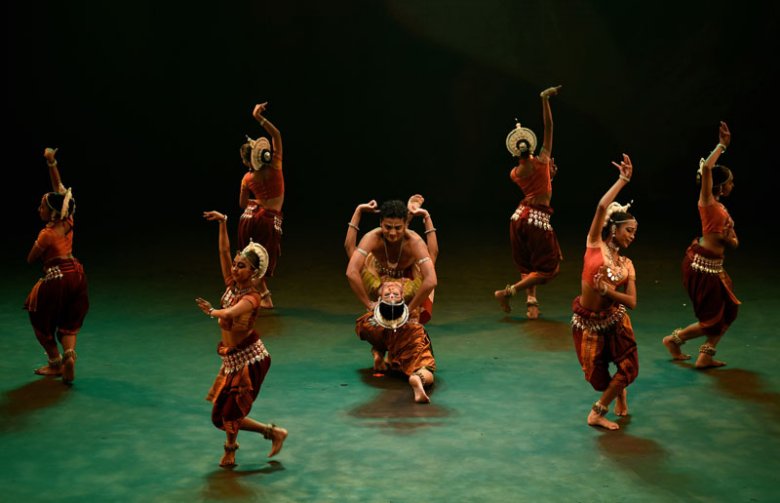 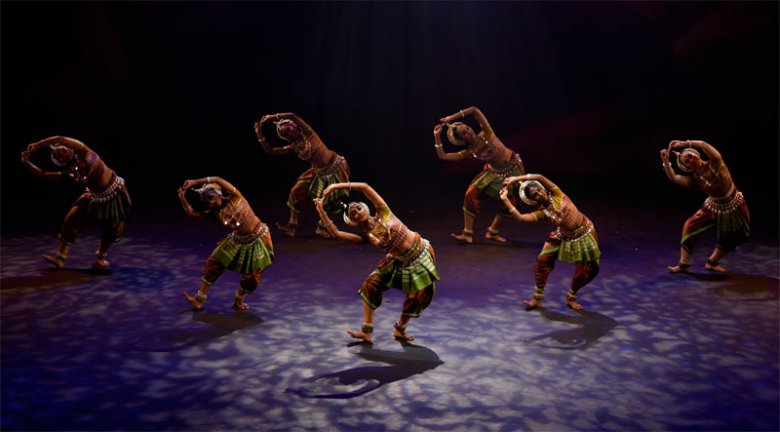 But above everything else is the fact that Ramli has over the years worked hard to create the kind of interaction among artists of different disciplines, which has added up to a strong lobby of support. He has a deep and abiding bond with painters and photographers, both Malaysian and Indian and in Sutra, the large hall where dance is practiced, the wall space of the gallery is totally taken up by the works of some artist or the other, whose exhibition is being held in the premises. Apart from Dinanath Pathy, painters like A.V. Ilango whose drawings of Nayikas, and his delightful analysis through the elegant brush strokes of the tribhanga or of minimalist portrayals showing 'languorous arms entwined' have all been excellent examples of linking Odissi to visual art. The empathy for the female figure apart, Ilango balances it with bold lines showing the female and male principles coming together in his paintings. Every high profile dance event is held alongside a painting exhibition which supplements it. Thus when Ganjam was held, the bold paintings of Dinanath on themes representing this area in Odisha, exhibited in the same auditorium foyer, seemed to add urgency to the dance. Dinanath has often told me that while Odisha has hardly any public interested in or given to purchasing paintings, Ramli's exhibitions were the best way of publicizing and selling his works. The nominal charges for holding the exhibition and working on the artistic planning of how to present the event made it a welcome deal for Sutra too. And one must admit that I have never come across so many painters being so inspired to paint by watching Odissi being performed (or for that matter any dance form) as I have seen in Malaysia, where a long line of Malaysian painters too have based their work on the dance. Sutra Foundation in its Board of Trustees has a long line of talents helping sustain activities. Sivarajah Natarajan's artistic direction in lighting, in photography, in graphic - all matching the choreographic designing, assures a flawless production for every work of Sutra. Weijun's motion graphics for Odissi on High were so breathtaking in impact that I frequently heard the person seated beside me, a learned professor working in the United States exclaim repeatedly, "This belongs to Broadway in New York. I have never seen such work with Indian dance ever before." Broadway may be least interested in Odissi dance - but in the sense of referring to the highest quality of presentation, the remark was significant. Apart from all this heightened consciousness of aesthetics in every aspect of a production, Odissi on High coincided with interactions that Kalinga International Foundation, headed by former foreign Secretary Ambassador Lalit Mansingh as Chairman, had with Malaysia, Indonesia and other countries of South East Asia. With Ambassador Mansingh as chief guest, the Sutra / Rudrakshya collaboration acquired a larger dimension, an excellent example of South East Asian cultural exchange. 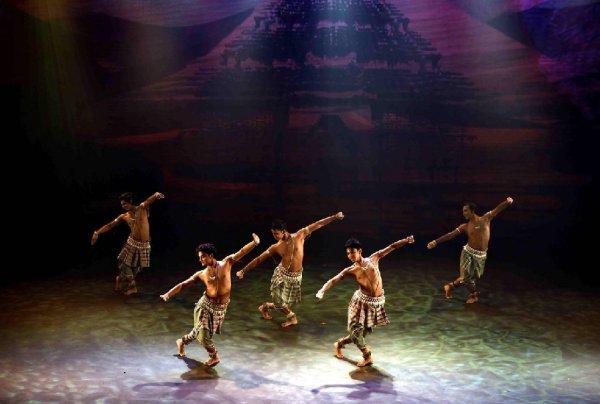 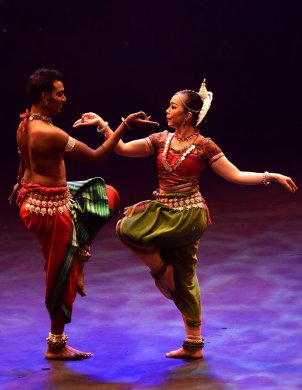 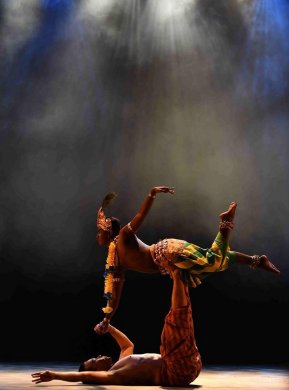 It is this artist interaction that keeps Sutra going. The highest Malaysian title of Datuk may have been conferred on Ramli Ibrahim. But it is a lifetime of non-stop tireless work and being known for excellent productions that makes government bodies like the Indian Cultural Centre and Malaysian University come out to support, however modestly, Sutra events. Sustaining Sutra is not an easy task. Rather like running to remain in the same place, it calls for imaginative ways of keeping one's head above water. But with the kind of inter disciplinary commitment among artists, solidly behind Ramli, Sutra pulls off its grand efforts.  Writing on the dance scene for the last forty years, Leela Venkataraman's incisive comments on performances of all dance forms, participation in dance discussions both in India and abroad, and as a regular contributor to Hindu Friday Review, journals like Sruti and Nartanam, makes her voice respected for its balanced critiquing. She is the author of several books like Indian Classical dance: Tradition in Transition, Classical Dance in India and Indian Classical dance: The Renaissance and Beyond. Post your comments Please provide your name and email id when you use the Anonymous profile in the blog to post a comment. All appropriate comments posted with name & email id in the blog will also be featured in the site. |